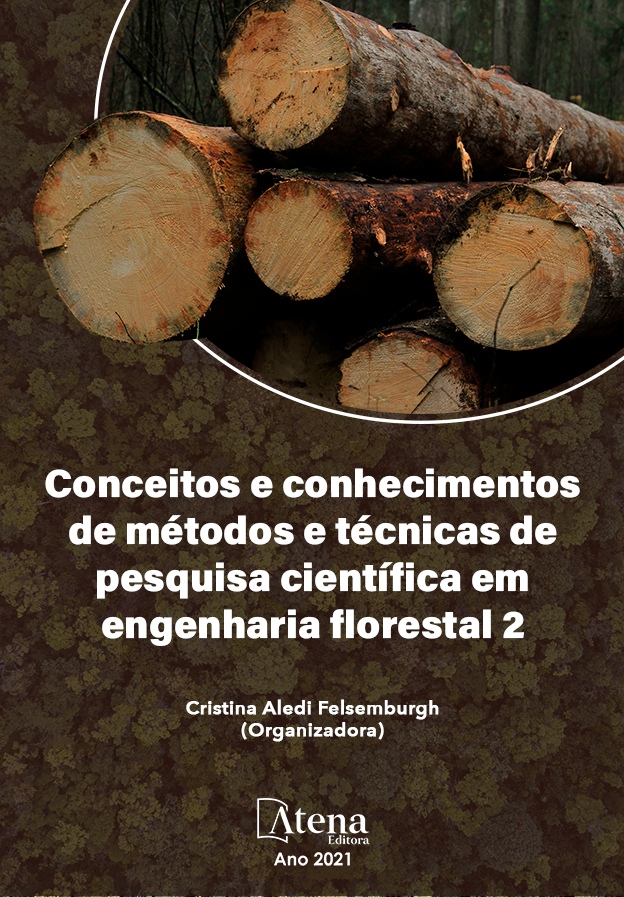
ENRAIZAMENTO DE MINIESTACAS E SELEÇÃO DE CLONES DE CORDIA TRICHOTOMA NAS DIFERENTES ÉPOCAS DE COLETA
A época do ano em que são coletadas as miniestacas para a produção de mudas exerce, em alguns casos, grande influência sobre o enraizamento adventício, e pode ser o principal fator de sucesso dessa atividade. Assim, objetivou-se verificar neste estudo o enraizamento adventício de miniestacas e selecionar clones de Cordia trichotoma (louro-pardo) coletadas em diferentes épocas do ano. O experimento é um bifatorial (época x clone) conduzido em câmara úmida, onde aos 30 dias de cultivo foram avaliadas a porcentagem de sobrevivência e enraizamento, o número de raízes, e o comprimento das três maiores raízes em miniestacas coletadas nas épocas de verão, primavera e outono. A época de coleta das brotações afetou o enraizamento adventício de miniestacas de louro-pardo, sendo a maior taxa de sobrevivência observada no outono, enquanto os melhores resultados para o enraizamento ocorreram durante as épocas de primavera e verão. Os clones 13SM18, 13SM10 e 13SM16 foram menos afetados pelas diferentes épocas de coleta das miniestacas, porém com menor competência ao enraizamento adventício. Os clones 13SM17, 13SM15, 13SM01, 13SM32, 13SM09 e 13SM26 foram selecionados por apresentar maior competência ao enraizamento adventicio na primavera, época que apresentou o maior índice de enraizamento de miniestacas de louro-pardo. A época de coleta das miniestacas de louro-pardo afeta o processo de enraizamento adventício. Os clones avaliados apresentam diferença significativa entre si para o enraizamento adventício nas diferentes épocas avaliadas, o que demostra a variação existente entre os genótipos, possibilitando assim ganhos de seleção.
ENRAIZAMENTO DE MINIESTACAS E SELEÇÃO DE CLONES DE CORDIA TRICHOTOMA NAS DIFERENTES ÉPOCAS DE COLETA
-
DOI: https://doi.org/10.22533/at.ed.9412127073
-
Palavras-chave: Cordia trichotoma; melhoramento genético; propagação vegetativa
-
Keywords: Cordia trichotoma; genetic improvement; vegetative propagation
-
Abstract:
The collection time of mini-cuttings for plantlet production may affect the adventitious rooting competence, and it can be the main factor of plantlet production success. This work aiming to study the adventitious rooting of Cordia trichotoma mini-cuttings to maximize the genetic gain from selection for vegetative propagation in different collection times. The experiment was carried out in a humid chamber with mini-cuttings collected during the summer, spring and autumn seasons. The percentages of survival and rooting, number of roots, and length of three largest roots were evaluated at 30 days of cultivation. The collection time affected the adventitious rooting of C. trichotoma mini-cuttings. Autumn collections favored survival and spring and summer collections improved mini-cuttings rooting. The clones 13SM18, 13SM10 and 13SM16 were less affect by collection times, but they presented the lowest percentage of mini-cutting rooting. The clones 13SM17, 13SM15, 13SM01, 13SM32, 13SM09 and 13SM26 were selected for rooting competence during spring collections, time that presented the highest rooting index of mini-cuttings of C. trichotoma. The collection time of the brown laurel minicuttings affects the adventitious rooting process. The clones evaluated showed a significant difference between themselves for the adventitious rooting in the different evaluated periods, which demonstrates the variation existing between the genotypes, thus enabling selection gains.
-
Número de páginas: 14
- Renata Smith Avinio
- Luciane Grendene Maculan
- Thaíse da Silva Tonetto
- Denise Gazzana
- Gabriele Taís Lohmann
- Kelen Haygert Lencina
- Dilson Antônio Bisognin
- Angélica Costa Malheiros


